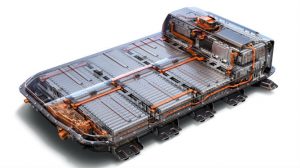
Tony Seba predicts global oil output will fall from 100MM b/d in 2020 to 70 MM b/d because of rapid rise of EV-based “transportation as a service”
If you live in Alberta or Texas or some other oil producing jurisdiction, remember this name: Tony Seba. The Stanford University lecturer released an extraordinary study last week in which he predicted the end of automobile ownership, the rise of “transportation as a service” companies based on self-driving electric vehicles, and the death of the global oil industry. And all this to happen in 13 short years from now.

I interviewed Seba on the phone from the Silicon Valley office of his think tank RethinkX.
I wrote an overview column about Seba’s study Friday and feedback on social media suggests readers are skeptical of his conclusions and forecast – especially the tight timeline – because shifting their thinking from individual car ownership to companies owning all the cars and ferrying passengers everywhere (not unlike a taxi service in some respects) for low fees is a step too far for folks steeped in North America’s 100-year old car culture.
And suggesting the mighty global oil industry will see its output reduced by almost 30 per cent only 13 years from now is just as unthinkable.
Getting our arms around the idea of a revolution in global transportation isn’t easy. The existing model of private ownership confers freedom, convenience, and for many, status. Moving people and products from point A to point B cheaply and efficiently is a big part of just about every Canadian and American business model.
Why are electric vehicles (EVs) likely to soon challenge internal combustion (ICE) vehicles for market hegemony?
The answer is rooted in the thermal efficiencies of the two technologies.
ICE engines only convert 15 to 20 per cent of gasoline to energy. Modern EV electric motors convert over 80 per cent of battery-stored electricity to energy, and that number peaks at 97 per cent for the Chevy Bolt, according to an email interview with Tim Grewe, General Motors general director of electrification.
ICE cars are tremendous wasters of energy. The only reason they make economic sense is because the energy density of gasoline is so much higher than that of EV batteries.
Economic and mechanical efficiencies are at the root of Tony Seba’s predictions. Efficiencies lead to dramatically lower costs. Lower costs lead to market disruptions.
Donate now! Please support high quality journalism by contributing to our Patreon campaign. Even $5 a month helps us continue delivering high quality news and analysis about Canadian and American energy stories that affect your life and your lifestyle.
Based on my work on the Energy Transition – which includes EVs and the electrification of transportation – electricity is eventually going to triumph over fossil fuels.
The burning question for Canadian and American oil producers is when.
To understand the context for Seba’s interview, think in terms two basic models for EV ownership.
One, the replacement model. Substitute EVs for internal combustion engines and the basics of transportation remain the same. But the economics change significantly. Will a family of four pay $42,000CDN ($37,500USD) for a Chevy Volt or under $20,000 for a Chevy Cruze hatchback – a very similar car – with a gas-powered engine?
Two, Seba’s Transportation as a Service model, where the TaaS company owns the EV and the cost per kilometre/mile travelled drops by a factor of 10. That’s right, commuting to work in the city or taking the kids to soccer practice by TaaS could cut costs by 90 per cent, according to Seba’s study.
That’s an astonishing cost reduction, but the real accelerator for TaaS is likely to be the value provided to global mega-cities like Vancouver, Toronto, New York and Los Angeles by taking vehicles off the road and relieving economy-crippling traffic congestion. Imagine not having to build more roads or more public transit? Maybe cities could get rid of must of their buses?
And what about the Canadian government and the provinces that might be interested in TaaS as a way to dramatically reduce greenhouse gas reductions?

But if we think of the value of the TaaS model as dramatically lower transportation costs, alleviation of crippling traffic congestion in mega-cities, and climate mitigation via burning less oil, does that combination help to drive rapid adoption of autonomous EVs?
I’ve interviewed economists and analysts about Seba’s study for columns coming soon. Bottom line: his math is sound.
That doesn’t mean his forecast will transpire as he describes, but it does mean that automakers, the oil industry, governments at all levels, and consumers should pay close attention to this issue as it unfolds.
The future may be arriving much sooner than we think.
The interview has been lightly edited for clarity.
Markham: Please give me an overview of your study.
Seba: RetinkX is a new think tank that is studying, analyzing technology disruptions and their implications for society. Our first report is essentially the disruption of transportation. Our conclusion is that within ten years of the approval autonomous [self-driving] vehicles, 95% of United States transportation miles will be served by on-demand autonomous EVs owned by a company – by fleets, as opposed to being owned by individuals. We call this “transportation as a service” path.
Markham: Which methodology did you use to arrive at your conclusions? Briefly describe your model, please.
Tony: We used the [00:01:50] technology disruption framework, which is I developed over the past decade teaching at Stanford and studying technology disruptions. Three years ago I used that model to write a book called Clean Disruption of Energy and Transportation.
In this study, we looked at recent new technology cost curves. For example, take Moore’s Law [computing power doubles every 18-24 months]. Solar energy from 1970 to today improve by about 11% per year. Lithium-ion batteries from about 1995 to 2010 improved by about 14% a year, and from 2010 to 2015 by about 20% per year.

Markham: I’ve interviewed Dr. Yi Cui, one of your colleagues at Stanford, he told me that over the next decade, EV lithium-ion batteries will drop in price by 50% and go up in energy density by 50%, but those seem to be lower percentage changes than you’re talking about.
Tony: I’m talking about the actual data from the market from 1995 to into the 2000s. Lithium-ion batteries prices improved by 14% and the reality, the actual data is that from 2010 to 2016, prices improved by 20%. These are facts, not opinions. so the question is, which number do you use? Do you believe that it’s going to improve at that 20% rate or go back to 14%?
Usually, technology cost reductions accelerate. But we’re very conservative, so instead of 20% we used 13%. We talked to battery-makers from around the world – Japan, Korea, the US – and we asked for actual costs today and the improvement rates over the next few years. and we actually took the 20% cost-curve over the last six months and we said, “Let’s be conservative and let’s put that number at 13,” so instead of taking– and a lot of what we did in the study, we were fairly conservative in the cost-curves. We’re are not even close to being controversial,

TAAS WILL take vehicles off the road and relieve economy-crippling traffic congestion. Imagine not having to build more roads or more public transit?
Won’t TAAS increase traffic? No need for parking lots, but each car will have to drive to pick you up instead of being ready in your garage.
Taxis probably drive 50% of their km just going to pick up customers
Tony has a valuable perspective and I think his insights into changes in transportation are useful and eye opening, though I believe his timeline is off.
Tony uses price as the primary indicator in weather people will choose electric over ICE vehicles, but there are factors he does not consider and even his cost estimates rely on his predictions of the transformation in energy.
1st: The cost if operating an EV will be near zero? Well we have a ways to go before power us free, so that’s a bit optimistic.
2nd: He mentions no social factors. Such as some times people want to drive further than a 200 mile round trip. Admittedly its probably a small percentage of total driving, but people (at least in America) are in love with the sense of independence that gives them even if they rarely use it. This s social factor he discounts. For this reason I believe many Americans would accept having an EV as one of their cars, but they will still want to have an ICE in the garage.
Half of America drives a truck or SUV. Electric trucks would consume larger amounts of energy making them less practical.
3rd: Cars last a decade or more, so even if EV hit 90% of sales it will be a decade before ICEs are sparse.
Factor #1 alone could cause sales to level of at 50% of new vehicles for years’ so in 13 years 50% if vehicles on the road being electric is more likely, and a number of things could interfere with that.
Such as one bad accident where batteries explode or cars catch fire could raise public fears about the safety if EVs.
As EV grow in number the demands could raise electric prices (and lower oil price) changing the numbers in favor if ICE.
Some ICE vehicles have high margins for manufacturers. When pressed they will be more competitively priced keeping the entrance fee high for EVa longer than Tony accounts for.
The true hybrid (an ICE generating power and electric engine driving the wheels) will play a role satisfying many if the benefits of both types and may become the dominant type.
But he is right in concept. EVs will become mainstream in the near future. I just wouldn’t write them off quite so fast.